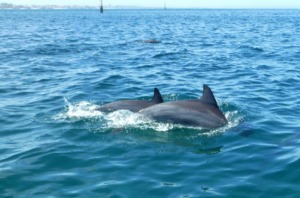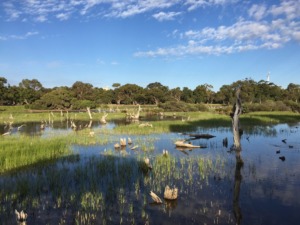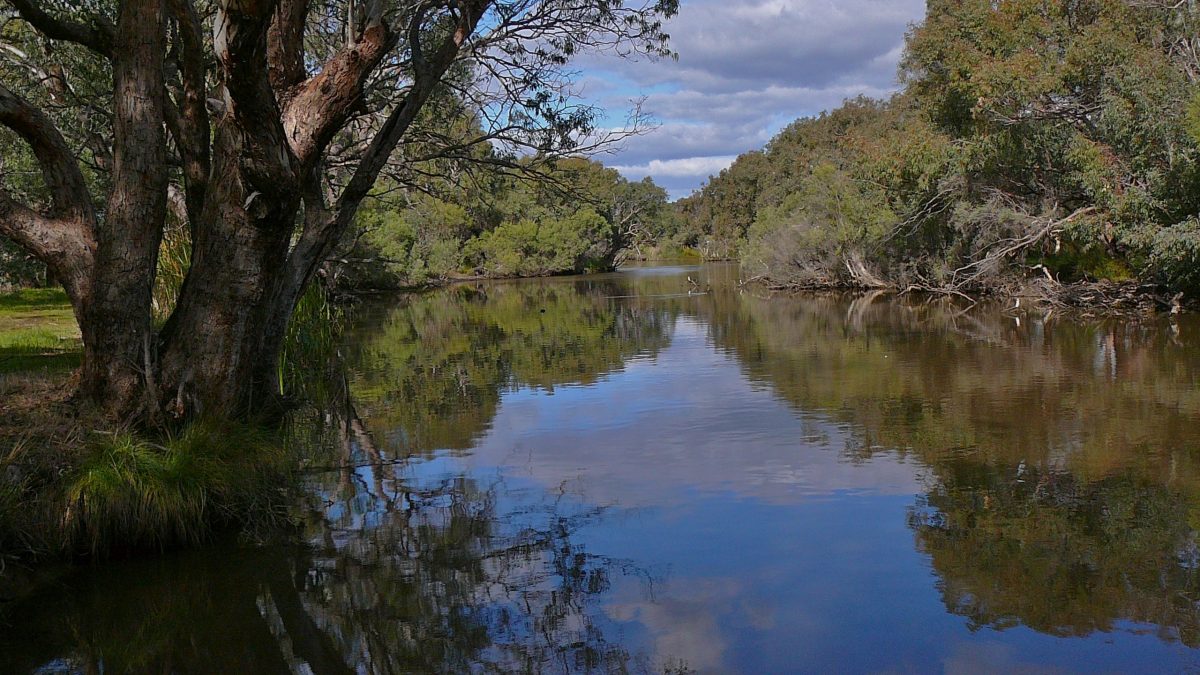Freshwater is essential to sustaining the Swan Region’s population and its unique natural ecosystems.
 Our Swan and Canning river systems, wetlands and groundwater support a vibrant city and active outdoor lifestyle. Agriculture, commerce and industry rely on this important natural resource and the public enjoy the aquatic ecosystems of many of our parks and reserves.
Our Swan and Canning river systems, wetlands and groundwater support a vibrant city and active outdoor lifestyle. Agriculture, commerce and industry rely on this important natural resource and the public enjoy the aquatic ecosystems of many of our parks and reserves.
Nutrient loading from fertiliser and organic material, algal blooms, invasive weeds, low concentrations of dissolved oxygen, contaminants and water borne pathogens can all affect the quality of our freshwater, and impact on the systems’ health. Importantly, federal, state and local government organisations are working collaboratively with land managers, industry, catchment groups and environmental volunteers to protect the quality and quantity of the Region’s freshwater systems, and many resources are now available to help you take action at the local level.
In the Swan Region, environmental agencies have adopted an integrated framework for the management of natural resources. A key goal of the Swan Region Strategy for Natural Resource Management is that water quality (marine and freshwater) is maintained and water resources are used sustainably. Strong partnerships between the proponents of the Strategy help to ensure that programmes are implemented to identify and manage the causes of environmental change to the water resources, and the risks and threats associated with these.
Perth NRM coordinates programs to minimise and ameliorate nutrient and non-nutrient contaminants. The Home, River, Ocean campaign encourages residents of the south-west to take the simple step of not fertilising their gardens and lawns during winter. This action alone would prevent over 10 tonnes of nutrients (nitrogen and phosphorous) entering our major coastal waterways of Geographe Bay and the Peel-Harvey, Leschenault and Swan Canning estuaries. By participating you can help to protect the environment and save yourself time, effort and money, as well as help the populations of the iconic Blue Swimmer Crabs. So, hold off on the fertiliser until spring.
Controlling the movement of soil, sand and cement from building and construction sites can also help to improve the health of the Region’s waterways. The Sediment Taskforce, funded by the Department of Parks and Wildlife (DPaW) and coordinated by Perth NRM, supports practical action by residents, the building industry, local governments and government agencies to reduce sediment pollution from entering our aquatic ecosystems. You can make a difference by sweeping or blowing soil, sand and lawn clippings back onto the verge or garden or by disposing of them into a bin or composting device. When action is taken on building sites it helps to prevent the deposition of sand in our drains, waterways and wetlands. It reduces nutrient enrichment of Perth’s aquatic ecosystems and helps to protect habitats, vegetation and native wildlife. Six simple measures are outlined in the Sediment Control for Building Sites Brochure.
Invasive weed species threaten water quality and the health of wetland ecosystems. Aquatic weed species often form dense mats that congest waterways, smothering native vegetation and creating unfavourable habitats for native fauna. Perth NRM is working in partnership with the local environmental community to control and manage the highly invasive aquatic species, hydrocotyle, as part of the National Landcare Programme’s Swan-Canning River Recovery Programme.
The on-going ecological health and condition of the Swan and Canning Rivers is monitored by DPaW, in partnership with a range of other government and non-government organisations. Together they measure a broad suite of environmental indicators, along with recording how the community is connected to and uses the rivers.
Policies, strategies and plans provide an overarching framework but you can take action at home, at school or in your work place to help keep our rivers healthy. The River Guardians website provides information about small changes you can make at home and practical projects you can be involved with to improve the health of waterways. Participating in citizen science projects like Dolphin Watch provides important information about the health of the river and taking part in volunteering activities like planting, weeding and rubbish removal helps to protect the river catchments.
Ten local Water Quality Improvement Plans (WQIPS) to reduce nutrients and other contaminants entering the Swan and Canning Rivers have been developed by local governments in collaboration with regional and sub-regional natural resource management groups, State Government agencies and the Water Corporation to reduce nutrients and other contaminants entering the Swan and Canning Rivers. Existing initiatives, like the Phosphorus Awareness Project, which aims to educate the public about the impact of too many nutrients, are showcased in the WQIPS, and the path to achieving the water quality targets described. The WQIPS address local catchment issues and provide direction to achieve outcomes identified in the Swan Canning Water Quality Improvement Plan (SCWQIP) and the Swan Canning River Protection Strategy.
We can all contribute to protecting and conserving the Swan Region’s freshwater systems. Strategic frameworks help to ensure an integrated approach to planning and management activities but by implementing simple actions you, and your local community, can have a big impact on both water quantity and quality of the Swan Region’s aquatic systems.
This article is part of a series of articles providing information on natural resource management topics identified as key areas of interest by environmental volunteers as part of the 2016 Community Capacity Assessment.

